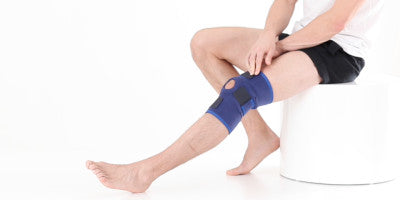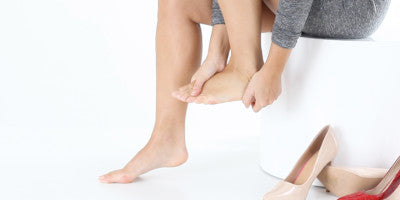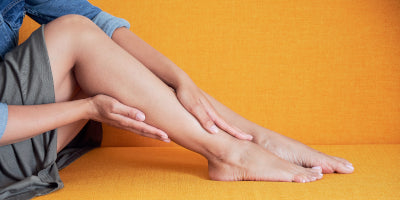Wound Advisor
As more and more of us are taking on increased responsibility for our own and our family’s wound treatment and dressing, here at Neo G we believe that self-care should not mean less care. How we care for our wounds can affect how well they heal and whether they are at risk of infection. While the risks associated with smaller cuts and abrasions may be minimal, larger, more serious wounds require a great deal of care and attention and it is therefore vital to follow best practices.
Moist wounds heal 2-3 times faster than dry wounds. Cell growth thrives on moist conditions and in order for your wound to form new skin tissue, new cells need to form. The principle aim of moist wound therapy is to create and maintain those optimal moist conditions for your skin to renew itself. Follow these simple steps to protect your wound and help it heal.
How to Care for Your Wound
Step 1 - Clean
Always wash your hands before and after treating a wound. Gently clean and dry the wound and surrounding skin. Do not use alcohol. Rubbing alcohol around wounded skin can potentially destroy the normal cells and tissues that typically assist in the wound healing process. Alcohol can also cause painful burns when applied on skin.Step 2 – Protect
Apply a dressing to keep the wound clean, safe and to help it heal. An open wound increases the risk of infection and research suggests that a wound that is protected with a dressing and kept clean and moist heals much faster. Ensure the dressing is the appropriate size for the wound. The dressing pad should be ½ inch larger than the wound. Place the dressing centrally over the wound site and smooth down over the skin. Avoid touching the side to be used on the wound to prevent bacteria getting into the wound.Step 3 – Monitor
Examine the wound regularly to ensure there is no sign of infection or degradation of the wound. The dressing should be changed when significant signs of exudate are visible or can be seen pooling around the edge of the pad. However, try not to remove too frequently, as this may delay the healing process and increases the risk of infection.
Step 4 – Remove & Replace
Remove the dressing by carefully pulling and slightly stretching a corner of the dressing. Gently remove the dressing from the wound bed and dispose. Cleanse wound site and replace with new dressing as required.
Understanding the Healing Process
In order to better treat ourselves and our loved ones at home, it can be useful to better understand the body’s natural healing process. This can be split down into four stages.
1. HEMOSTATIS PHASE

Hemostasis is the process of the wound being closed by clotting. This stage happens very quickly as, within seconds, your blood vessels constrict to restrict the blood flow and platelets of red blood cells stick together in order to seal the break in the wall of the blood vessel. Within about a minute, coagulation occurs and reinforces the platelet plug with threads of fibrin (molecular binding agent).
2. INFLAMMATORY PHASE

Beginning right after the injury, blood vessels leak transudate (water, salt and protein) which causes localised swelling. Inflammation controls both the bleeding and the prevention of infection and it allows for healing and repair cells to move to the site of the wound while damaged cells, pathogens and bacteria are removed from the wound area. The inflammatory phase often lasts four to six days.
3. PROLIFERATIVE PHASE

Consisting of three distinct stages, the proliferative phase often lasts anywhere from four to 24 days. Initially, the wound bed is filled with deep red granulation and connective tissue and new blood vessels are formed. Following this stage, the wound margins contract and pull toward the centre of the wound. The final stage of the proliferative stage is to cover the wound. Here, epithelial cells arise from the wound bed or margins and begin to migrate across the wound bed in leapfrog fashion until the wound is covered.
4. MATURATION PHASE

Finally, the maturation phase is when collagen is remodelled from type III to type I and the wound fully closes. Collagen is aligned along tension lines and water is reabsorbed so the collagen fibres can lie closer together and cross-link. Cross-linking of collagen reduces scar thickness and also makes the skin area of the wound stronger. Generally, remodelling begins about 21 days after an injury and can continue for a year or more. Even with cross-linking, healed wound areas continue to be weaker than uninjured skin, generally only having 80% of the tensile strength of unwounded skin.
Hospital Grade Products for Care at Home
At Neo G, we have developed a range in conjunction with leading experts to bring you hospital grade dressings for use at home.
Opti-Heal focusses on three key principles of wound care:
1. Liquid Management
Exudate levels need to be controlled in the wound environment. Too much exudate will leak causing further problems including maceration and enlargement of the wound area. Too little and the wound bed may become dehydrated. Neo G Opti-Heal dressings are designed to conform closely to the wound bed, controlling exudate levels to optimize healing of wounds.
2. Wound Monitoring
It is important to monitor the wound as it heals to ensure that there is no infection or degradation of the wound. Frequent removal may delay the healing process and increases risk of infection. Neo G’s Opti-Heal dressing are repositionable, allowing for monitoring without fully replacing the dressing. Some are also transparent to allow visibility of the wound without removal.
3. Kind Removal
Neo G’s Opti-Heal range all use silicone adhesive with a number also including a silicone wound contact layer. Our soft silicone dressings are allergy free and are designed to be comfortable, protect the skin around the wound and reduce pain and trauma during dressing changes.
Explore our Opti-Heal range here.



















